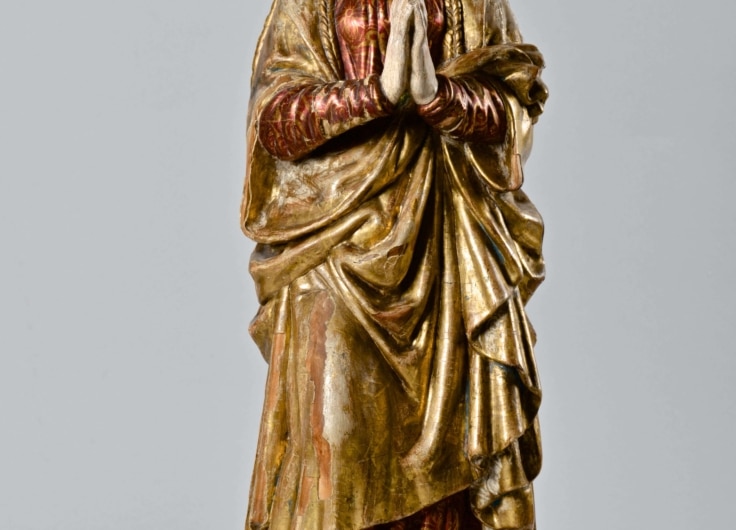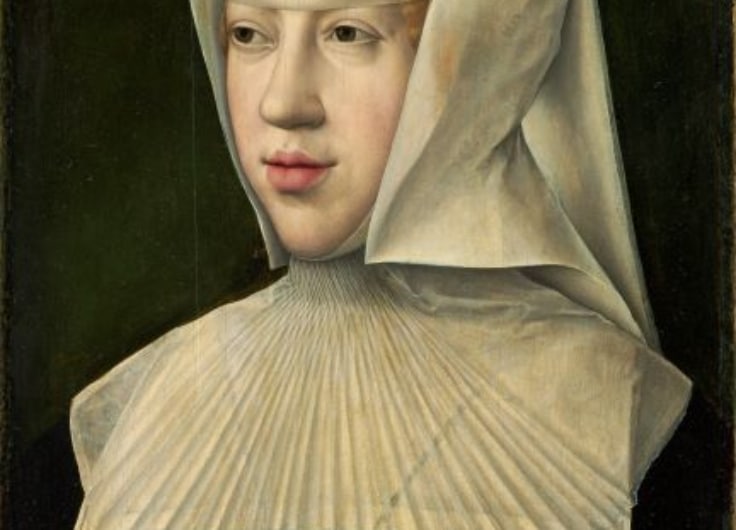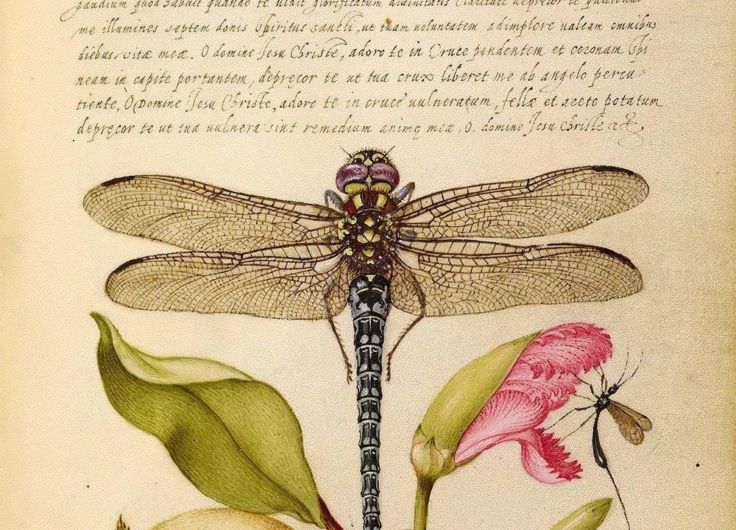Serene Portraits of Renaissance Children Hide Calculated Political Play
What can the portraits of the young Burgundian-Habsburg princes and princesses teach us about the political powers struggles of sixteenth-century Europe? You can discover the answer until 4 July at the Hof van Busleyden Museum in Mechelen. The Renaissance Children exhibition includes, amongst other things, paintings of children who were pawns in a political game from a tender age, an endearing grave monument, and a rather chilled-out portrait of Emperor Charles as a boy.
The voices of children could be heard for more than half a century behind the walls of the Hof van Kamerijk, where Mechelen’s City Theatre stands today. Those children would later become central political players in sixteenth-century European politics. Three consecutive generations of young Burgundian-Habsburg princes and princesses grew up here, including the future Charles V. For the Burgundians and early Habsburg monarchs, Mechelen was not only an important political and cultural centre, but also a centre of learning.
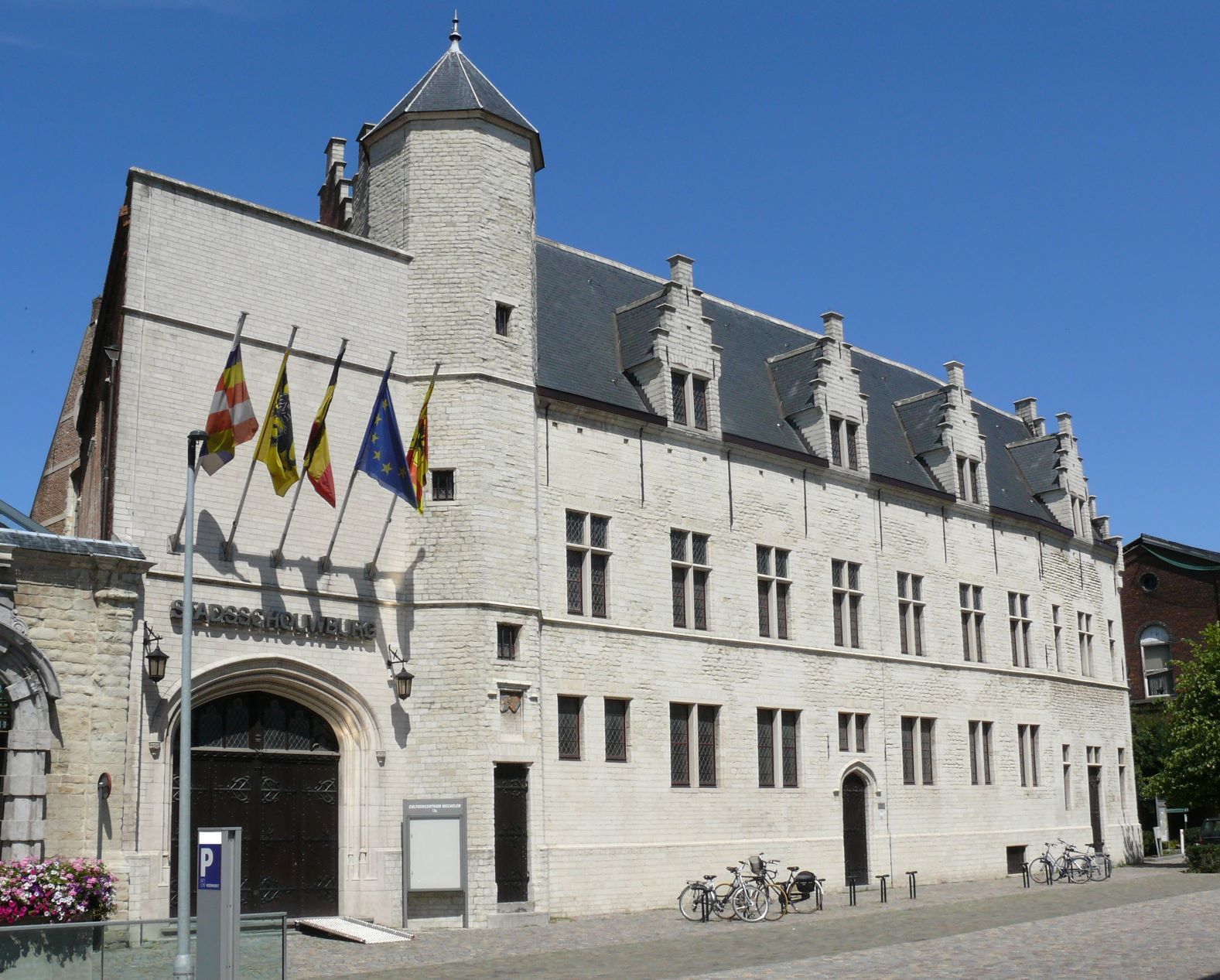 Hof van Kamerijk, Mechelen
Hof van Kamerijk, Mechelen© Wikipedia, Ad Meskens / CC BY-SA 3.0
Until 4 July, the Hof van Busleyden Museum in Mechelen is offering an insight into the lives of these children, thanks to the art that portrays their upbringing. In the Renaissance Children
exhibition, you’ll find portraits of almost all the Burgundian-Habsburg children who lived in the Hof van Kamerijk.
Margaret of York and Margaret of Austria were in charge of the children’s princely education. They tasked prominent painters like the Master of the Magdalen Legend, Pieter van Coninxloo, the Master of Mechelen’s Saint George’s Guild, Juan de Flandes, and Jan Gossart with the creation of these stunning portraits. The surviving works offer a unique overview of the evolution of children’s portraiture between the end of the fifteenth century and the first decades of the sixteenth century.
The Humanist Ideal
When Philip the Fair and Joanna of Castile travelled to Spain in 1501 to take up their role as future monarchs, an extensive royal household was established back in Mechelen for their three young children Eleonora, Charles and Isabella. Charles’ every move was overseen by a bodyguard of fifty archers. By the age of three, the noble toddler was already assigned a lute player, a drummer, cooks and porters. As he got older, heralds of arms, sommeliers and a jester were added to his entourage.
Charles’ every move was overseen by a bodyguard of fifty archers
The rich Burgundian court ceremonies were closely respected. Margaret of York, and later Margaret of Austria, close relations and both childless themselves, seem to have played an important and effective role in the children’s upbringing, which was almost completely outsourced. Their own parents saw the children rarely, if ever. They were nursed and cared for by servants and then guided by the best tutors of the age. The purpose of their upbringing was to prepare them for the prominent social positions they would one day fulfil.
During the transition between the Middle Ages and the Renaissance, the tenets of Humanism as described by Erasmus or Juan Vives became central to a curriculum that included music and dance, art, languages and literature, mathematics and also the time and space for play. In this way, the royal children – overwhelmingly girls – benefitted from a complete and varied education.
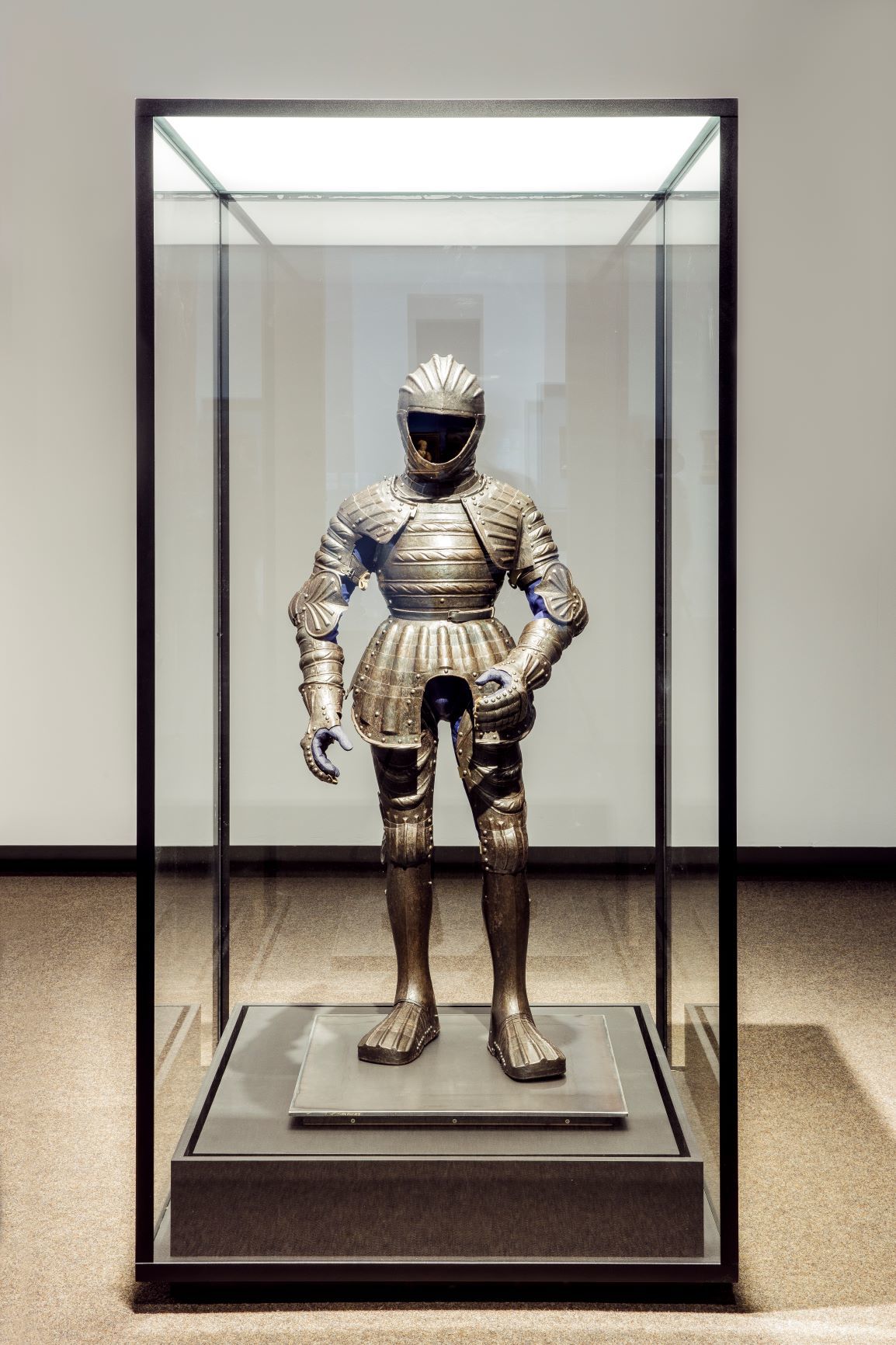 The unfinished armour of the young Archduke Charles, later Charles V
The unfinished armour of the young Archduke Charles, later Charles V© Museum Hof van Busleyden – Sophie Nuytten
The influence of court culture on the Middle Ages, generally, was even more notable: riding, tourneys and falconry were all part of the children’s physical education. We can see proof of this in both the portraits and in the exhibition of toys. One striking showpiece is the unfinished armour of the young Archduke Charles, later Charles V. It was specially designed and made to measure in expensive, lightweight steel, but he never wore it. Before it was finished, the young Charles had already outgrown it. Even little princes eventually grow up.
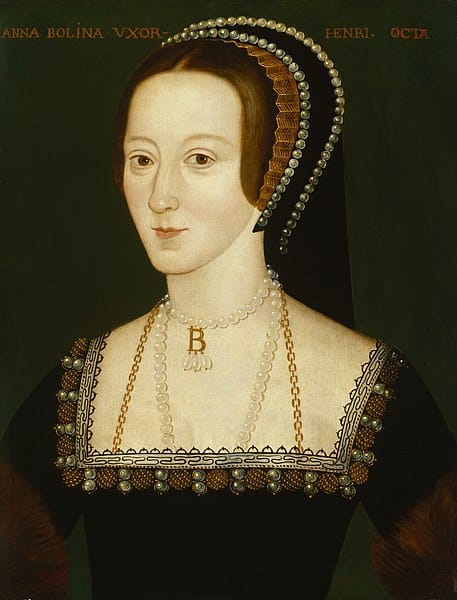 Portrait of Anne Boleyn, by an unknown painter, sixteenth century, National Portrait Gallery, London
Portrait of Anne Boleyn, by an unknown painter, sixteenth century, National Portrait Gallery, London© Wikimedia Commons
The princes and princesses didn’t grow up alone in Mechelen. In the time of Charles and his sisters, some twenty other children resided and were educated at the Hof of Kamerijk. They were there to create and reflect the social hierarchy in which the young royals would function while strengthening their European network.
These honourable children came primarily from the regions that were under the influence of the Habsburgs. The most famous among them was Anne Boleyn. For this young daughter of an English diplomat, her education in Mechelen, where she learned to dance and speak French, offered her a chance to rise up the social ladder. She became queen of England as the second of Henry VIII’s six wives.
Pawns in a Political Game
The children had the best education, the most beautiful clothing, the finest toys and the best books of the era. But were they happy? The answer to that question is left to the interpretation of the exhibition’s visitors. You won’t find many uninhibited, happy faces in the sometimes poignantly beautiful children’s portraits. For many of them (some no more than two years old) it must have been quite a hardship to pose in complete stillness for such a long time. Not to mention all the pressure placed on them and the emotional detachment with which they were raised.
The children had the best education, the most beautiful clothing, the finest toys and the best books of the era. But were they happy?
Their portraits are timelessly powerful thanks to the refinement with which their fragility and mysterious expressions are laid bare. But these portraits did not only serve as mementos of childhood or gifts to family members. These children were, almost from birth, used as pawns in a political game over which they had absolutely no influence.
The portraits were used in marriage negotiations and exhibited to interested parties. What did the marriage candidate look like, was he or she healthy and whole, was there something lacking? The coats of arms in the portraits provided a subtle indication of which lands and properties the subject of the painting would bring to the marriage.
During their lives in Mechelen, almost all of the Habsburg princes and princesses were engaged, often more than once and at very young ages, though the offers of marriage would often be rescinded many years later. Through strategic marital alliances, the girls particularly formed the basis of the political dominance of the Habsburgs in Europe and throughout much of the world until shortly before the start of World War I.
Through strategic marital alliances, the girls particularly formed the basis of the political dominance of the Habsburgs in Europe
The silent portraits say quite a lot to those who can read the symbolism. Take clothing, for example. A white smock, used to indicate the age differences between children, often covered a large part of the child’s clothing. The youngest wear the smock and a white cap on their heads and are often depicted holding a toy. Slightly older children, such as school-age boys, wear trousers and cloaks.
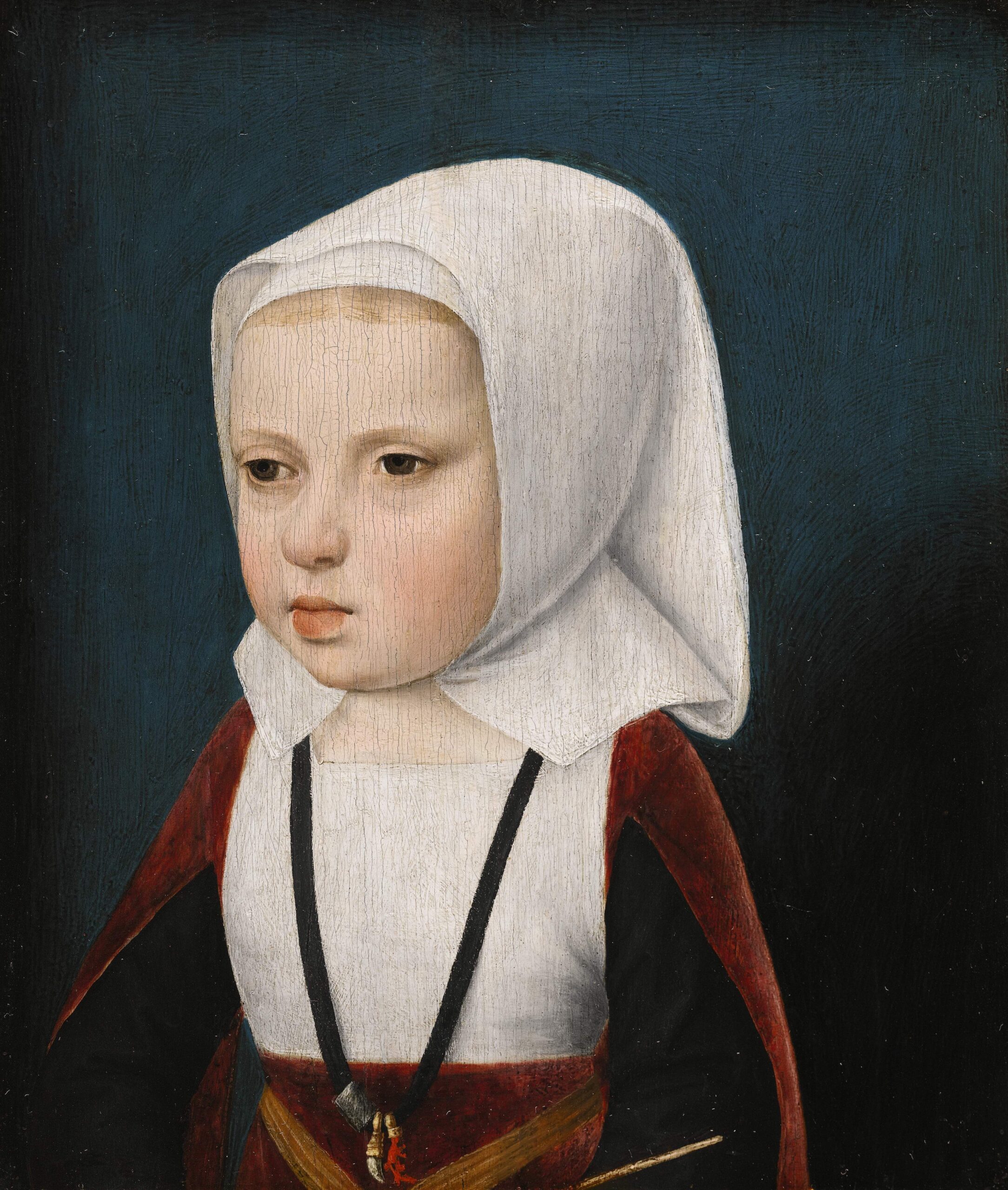 Master of the Magdalen legend, Portrait of a princess, probably Archduchess Isabella, oil on panel, private collection
Master of the Magdalen legend, Portrait of a princess, probably Archduchess Isabella, oil on panel, private collection© Sotheby's
In one delicate bust portrait, an infante (royal child) with an inscrutable gaze holds a rose in his hand, a symbol of purity. The campaign image of the exhibition shows a Habsburg princess, either Eleonora or Isabella, but which one of the two is not entirely clear. The girl wears a black ribbon around her neck with a wolf tooth and a piece of red coral as a pendant. These were intended to be sucked on when the child was teething, but also served as amulets of protection against illness and sudden death.
The common reality of infant mortality is reflected in the art of the sixteenth century in the form of paintings and gisants, sculptures of dead children. A marble grave fragment of a swaddled baby has a poignant, serene beauty.
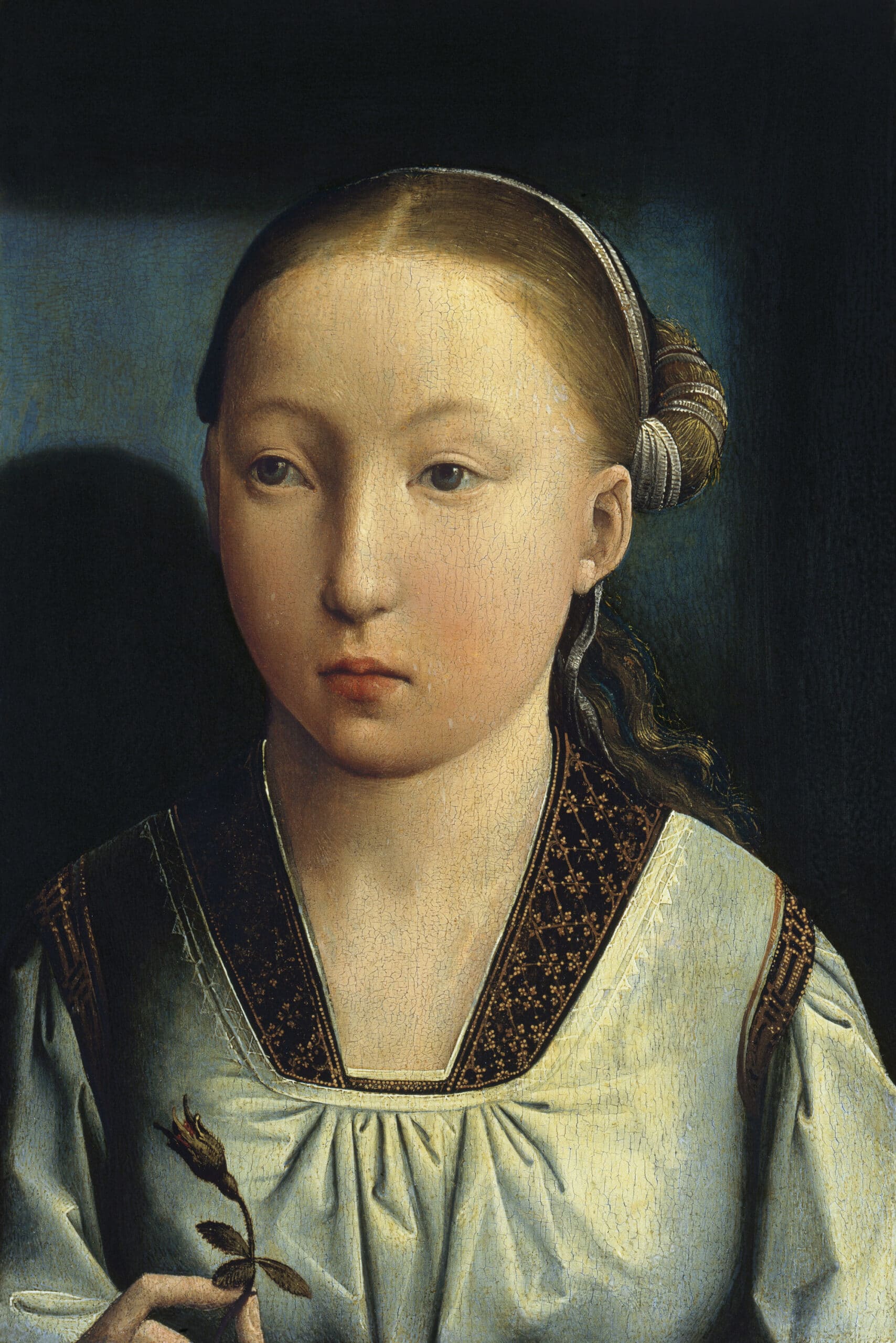 Juan de Flandes, Portrait of an infante, ca. 1496, oil on panel, Museo Nacional Thyssen-Bornemisza, Madrid
Juan de Flandes, Portrait of an infante, ca. 1496, oil on panel, Museo Nacional Thyssen-Bornemisza, Madrid© Wikimedia Commons
Princes of their time
In the nineteenth century, painters depicting historical themes sought inspiration from the glorious periods of the past: national heroes were needed to imbue the young nation-state of Belgium with greatness and legitimacy. The figure of Charles V had much to offer. Jan Van Beers’ portrait of the young king, done in 1879, surprises viewers because of its quality of light and its composition, and not least by the way in which the young Charles is portrayed. Is it his adolescent coolness, his disinterest, or perhaps his sadness? Does a certain inaccessibility in his gaze foreshadow his glorious future? The portrait is intriguing on many levels.
 Jan Van Beers, Charles V as a child, 1879, Royal Museum of Fine Arts Antwerp
Jan Van Beers, Charles V as a child, 1879, Royal Museum of Fine Arts Antwerp© Wikimedia Commons
The sleek and atmospheric scenography of the exhibition does justice to all the works in this compact collection. At the end, a connection is sought with key moments in the lives of children today. A mix of photographs, videos and collages inspired by sixteenth-century portraits capitalises on our present-day fascination with phenomena such as selfies and TikTok. An activity booklet and accompanying shop window exhibition throughout the city also help to expose your own little prince or princess to the beautiful portraits of their peers from half a millennium ago.


